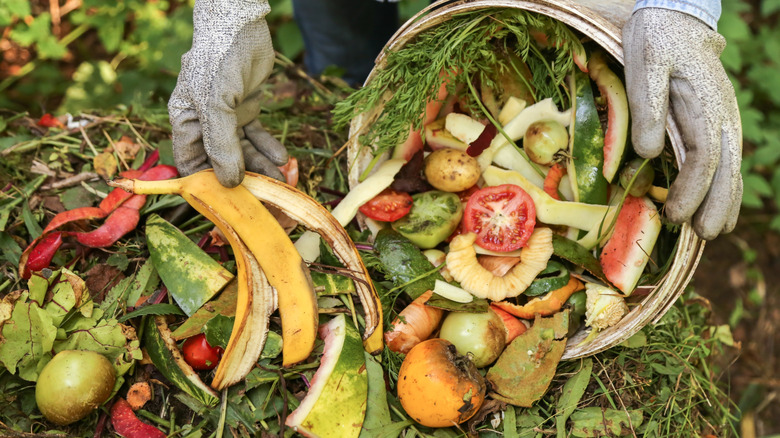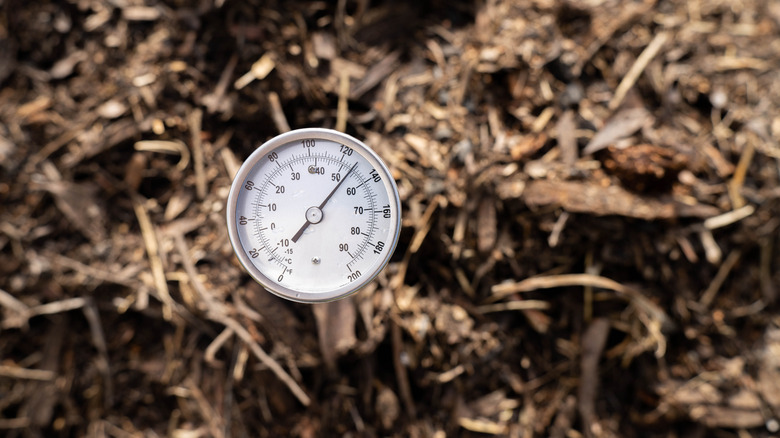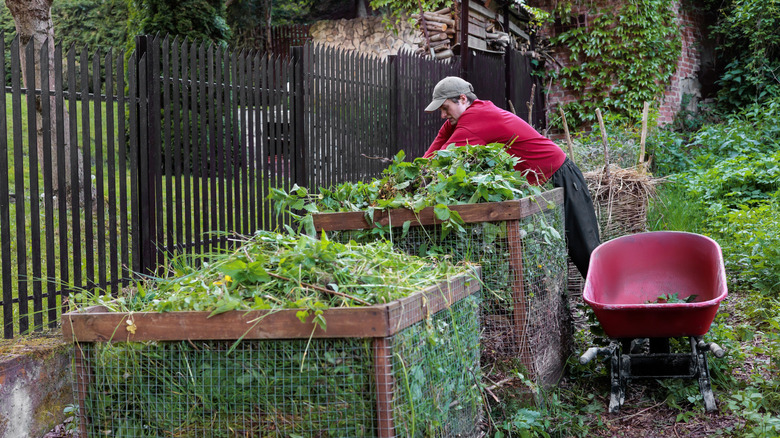Hot Vs Cold Composting: What's The Not-So-Obvious Difference?
Even if you've been nurturing a compost pile or tumbler for years, you might not realize what kind of composting you're doing. Are you hot or cold composting? Lots of composting resources focus on the heat generated as organic material breaks down. It might make you think that, no matter your method, you're engaging in hot composting.
If you've just started composting and are still testing the waters, it's good to get familiar with these two types of composting. In general, hot composting produces usable material much faster, but it requires a lot more attention. Cold composting takes significantly longer to yield compost, but it's usually a better fit for busy lifestyles.
So why the difference between these two types of composting? It all comes down to oxygen. Microorganisms that rely on oxygen heat up the components as they decompose it, and they do it with surprising speed. As you'd expect, hot composting involves the organic matter reaching high temperatures. Hot composting helps the pile heat up to between 115 and 160 degrees Fahrenheit, which is warm enough to kill weed seeds and diseases. Due to this process, hot compost can be ready to use in as little as two weeks. Cold compost doesn't even come close to this type of turnaround, but a cold pile will provide you compost without a daily commitment.
A quick breakdown of hot composting
Hot composting doesn't just happen. Turning, temperature monitoring, watering, and attention to what you put in the pile are absolute musts. What's more, this isn't the type of pile that you gradually throw compostables on. However, the hot method is a more reliable way to compost your weeds, since the high temperatures kill seeds.
You've got to start hot composting with enough organic matter to make up a pile at least 3 cubic feet to generate enough heat. Hot composting works best when you create a pile all at once rather than gradually adding more material. Cut your compostables into pieces between ½ inch and 1 ½ inch square to aid the breakdown process, and get the heat going with an equal ratio of greens to browns. It's smart to invest in a soil thermometer to monitor the pile's progress; it needs to maintain temperatures of at least 104 degrees Fahrenheit for five days, and for at least four hours it must reach past 131 degrees Fahrenheit for the microorganisms to have optimal conditions.
As for active work, frequently turning the compost aerates the pile and gives the decomposers a necessary boost of oxygen. Also, hot compost piles need to stay consistently moist, so you'll probably need to give it extra water. When you squeeze the contents of a hot pile in your gloved hand, it should feel about as moist as a damp sponge. Turning your compost every day or every other day is the best way to oxygenate the pile and distribute vital moisture.
Chill out with cold composting
For the patient gardeners with packed schedules, there's nothing wrong with creating a cold compost pile. Although it can take up to two years for the compost to be ready, these piles are very low maintenance. Don't worry about the perfect size, regular watering, or nearly as much sweat-inducing turning as you would with a hot pile. Cold composting often creates a stinky pile that can attract pests to your yard, but layering browns and/or dry ingredients on top of greens can keep the smell at bay. Occasionally turning the pile to aerate it also works to cut down odor.
The decomposers in cold piles can consume the waste without extra oxygen. Cold compost piles work by anaerobic decomposition, and the decomposers ferment the waste as they consume it. You only need to douse them with water when they look dry. Still, regular turning does help to distribute decomposing contents. This method involves turning the contents once or twice a month rather than daily.
You can start a cold pile with just a small amount of compostables, adding waste as you go. Yet, you should pay heed to the ratios of what you add to the pile. You'll get the best results by mixing in twice as much brown matter as green. Also, since temperatures are too low in cold piles to kill weed seeds and diseases, don't throw weeds or infected plants into the bin.


